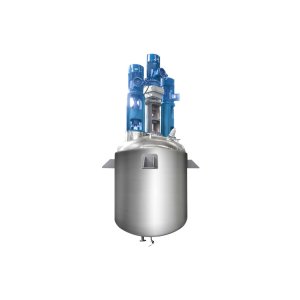
-24-1.jpg)
Heating Stainless Steel Reactor
heating Stainless Steel Reactor: used in chemical, pharmaceutical, and other industries.
Material
stainless steel (316, 304)
Capacity (L)
10-10000+
Mixing system
anchor, paddle, frame and others
Heating system
electric heating, oil heating and others
The heating stainless steel reactor is composed of a kettle body, a kettle cover, a stirrer, a heating and cooling jacket, a supporting transmission device, a shaft sealing device, a tank body, an oil leakage device, etc. It is equipped with an electric heating rod and a temperature pressure gauge. Due to the different production processes and operating conditions of users, the mixing forms generally include anchor type, paddle type, turbine type, propeller type, or frame type. The outer wall of the jacket is welded with a bracket, the bracket has two kinds of suspension or bracket, and there is a discharge port at the bottom of the pot body. Electric heating stainless steel reactors are widely used in petroleum, chemical, rubber, pesticides, dyes, medicine, and food to complete processes such as vulcanization, nitration, hydrogenation, alkylation, polymerization, and condensation. Electric heating stainless steel reactor, steam heating stainless steel reactor, heat conduction oil heating stainless steel reactor, and far-infrared heating stainless steel reactor can be customized according to user needs.
Request a quote

-24-1-300x300.jpg)

